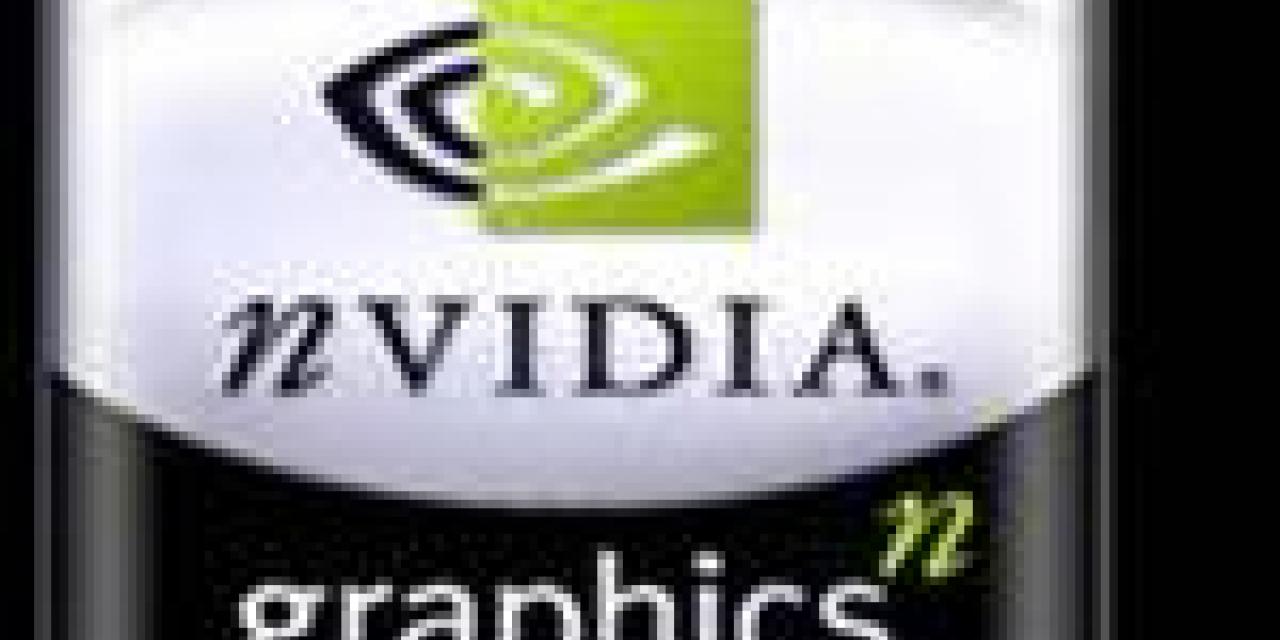

Nvidia's nForce chipset for AMD Athlon and Duron processors is about to take its first steps in motherboards and desktop PC's this coming week.
Many believe the nForce chipset will give AMD the much needed boost in order to overcome issues raised by AMD'S ailing homegrown 760 chipset for desktop PC's. The graphics and audio improvements offered by nForce have been measured by various benchmark tests to be up to 20%. "The graphics performance on nForce is quite strong," said Dean McCarron, principal at Mercury Research. "It's basically on par with the GeForce2 MX product," he concluded.
The nForce graphics chipset with integrated media communications processor and embedded memory is said to deliver 4.2Gbyte/s throughput and what Nvidia claimed is the fastest I/O south bridge in the industry.
The expected price of PC's using the chipset will be $900 and above and motherboards will cost anything from $100 to $200. The nForce will be available in two versions, the high end he 420, and the more accessible 220. The 420 differs from the 220 primarily with its groundbreaking dual channel (128-bit) DDR SDRAM interface.
It is obvious, from the use of the chipset on the X-Box, that it has been manipulated in order to work with Intel Pentium 3 processors but it is widely believed that nVidia has further developed nForce to work with Pentium 4's as well. For the time being however, nVidia claims that there is no license agreement with Intel.
Follow the link below and the right to find out what a chipset really is...
For years core logic controllers, often called chipsets or even "glue logic," served workmanlike duty in commodity market roles. Always in the shadow of the CPU, chipsets are nevertheless challenging to develop. If elegantly implemented, chipsets can have profound impact on overall system performance. Nvidia's strategy is to apply acceleration resources to many of all of the most computationally intense functions to be found on next generation systems. Secondarily, these acceleration resources must be linked together in a manner that provides sufficient bandwidth now and in the future.
Traditionally, chipsets are composed of two primary components. The "Northbridge" provides an interface between the CPU, DRAM, PCI and AGP. With direct access to main memory the north bridge is also the obvious target for integration of graphics controllers. The second chip, called the "south bridge," connects to the north bridge through its PCI interface. This component contains several different I/O controllers such as IDE, Ethernet, audio and USB. As these interfaces increase in performance demands over time, they have begun to exceed the capability of the PCI bus. This has precipitated a need to re-architect the platform.
In addition, PCs are perpetually evolving to handle more advanced communications, rich media content, entertainment applications and more complex Internet chores. A few of these new duties are:
Internet Gateway: With the proliferation of broadband Internet connectivity along with emerging home intranets, more households must find ways to share a single Internet connection. Although a router is a possible solution, a router does not enable immediate access to files, email, and shared printers. Setting up one computer as an Internet gateway while networking with other systems in the household is an inexpensive and increasingly attractive solution to these many problems.
Home audio: In the last few years computers have quickly become a central focus of home audio. MP3s are ubiquitous, and the vast majority of people use computers for "ripping" tracks from CDs as well as playback of these files. A computer is essential for delivering music to MP3 players. An increasingly popular application for PCs is as an MP3 jukeboxes for home stereos.
Complex 3D Graphics: Gaming has been the chief driving force for complex PC 3D graphics. However other areas such as digital video editing, business graphics as well as engineering, architectural and mathematical modeling also continue to drive this field.
Home theatre component: Cheap DVD drives are becoming commonplace in today's PCs. Moreover computers are increasingly expected to handle demanding tasks like DVD decoding as well as Dolby Digital Audio.
Digital Imaging: Digital cameras have finally caught on with a vengeance. As resolutions increase, the need for higher bandwidth connections such as 1394 or USB2 will become more acute. Image editing software is also growing more sophisticated and computationally demanding.
Digital Video: It is possible to purchase relatively cheap digital video packages that approach the quality of expensive broadcast television equipment of only a decade or so ago. As prices continue to decline, users will begin to require digital video editing capability, though the actual frequency of its use is yet to be determined.
These tasks can be divided up into two categories - those that need lots of MIPS, and those that need lots of bandwidth. Some need both. With the availability of a high bandwidth interconnect scheme, computationally intensive chores can be distributed among specialized processors or accelerators. Functions that demand more raw bandwidth include broadband networking, disk I/O, multi-stream audio, digital video streaming and other tasks that may happen concurrently. It is arguable that the PC architecture of the 90's may not be up to snuff.
NVIDIA's answer to these trends is to integrate powerful, low latency co-processing devices that can exploit new levels of bandwidth. With memory channels widened to these embedded components, more robust solutions are possible. In effect, NVIDIA's architecture enables a balanced distributed processing platform.
